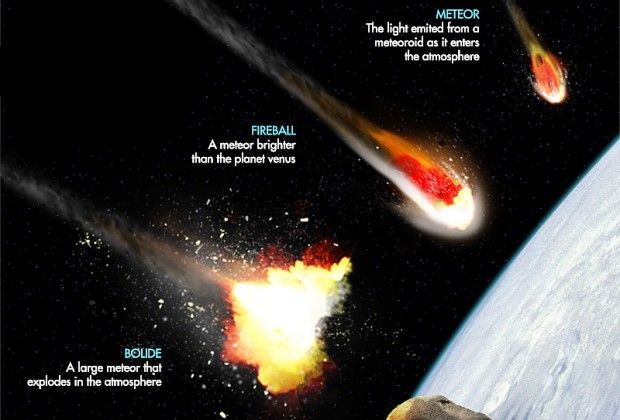Meteor lights up Wyoming sky
 Space debris dashed across the skies above Wyoming on Thursday morning for just three seconds, striking awe in the handful of people who saw it.
Space debris dashed across the skies above Wyoming on Thursday morning for just three seconds, striking awe in the handful of people who saw it.
“At first it kind of took me by surprise,” said Casper resident Niki Bejvancesky, who was travelling to her job in Midwest. “As it was traveling, I thought it was a falling star. Then I noticed it was a lot bigger than a star. There were no other stars out.”
Technically, the debris was a “fireball,” a meteor brighter than Venus, and possibly a “bolide,” a fireball that explodes in the atmosphere, according to the American Meteor Society.
The society tracks sightings of space debris. It received 55 reports about the fireball from a 700 square-mile area that includes Wyoming, Colorado, South Dakota, Montana and Alberta, Canada, said society volunteer Mike Hankey, who lives in Baltimore.
At 5:45 a.m., the fireball traveled southwest to northeast – from north of Cloud Peak in the Big Horn Mountains to a rural area in Montana between Devils Tower National Monument and Montana’s Medicine Rocks State Park.
“It almost looked like a transformer had blown up,” said Casper resident Mike Brelsford, who spotted it on southbound Interstate 25, outside of Glenrock. “But it was way out in the sky.”
“One part was the size of my pinkie,” said Jeremy Tucker of Casper. “The flares spread out about an inch and a half. All together there were four flares.”
The color of the fireball was either green, as Bejvancesky saw it, or blue and teal, as Tucker saw it, or blue and white, as Brelsford saw it.
A fireball’s color is key to its composition, according to the American Meteor Society’s website.
When a fireball vaporizes as a green color, it has nickel. If it’s blue or white, it has magnesium.
Fireballs originate in the asteroid belt, a rocky area between Mars and Jupiter, Hankey said.
They dance across the Earth’s sky daily, but since two-thirds of the planet is ocean, human sightings are infrequent.
“You might have one or two happen in Wyoming every year,” Hankey said. “But for you personally to be outside at that right moment, it only lasts three seconds. Most people only see one once or twice in their life.” Trib
